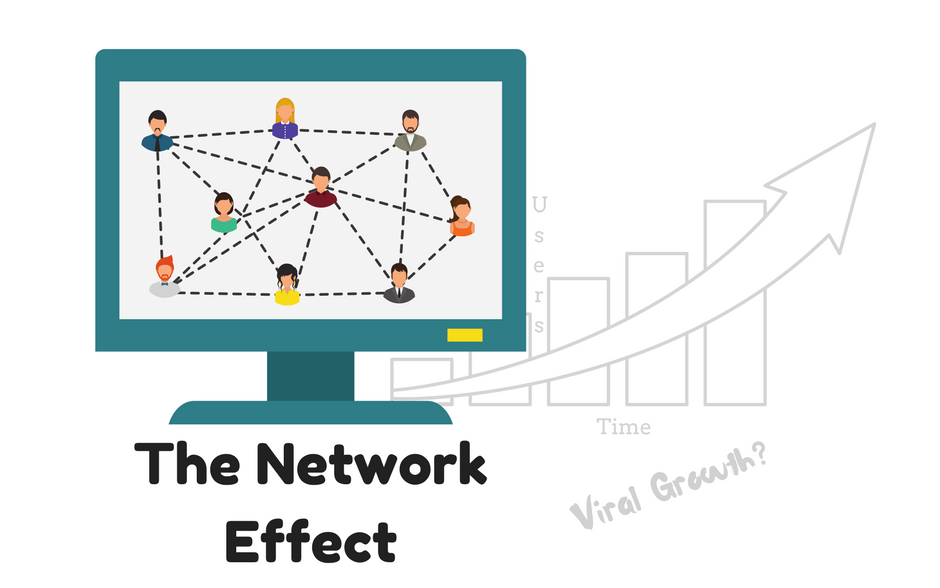Most projects being built on blockchains are using open source code. This means that IP, or intellectual property, is not a component of the value of an ICO or its token. In time, ICO teams will copy technology, code and ideas from projects that succeed, and learn from the projects that fail.
What this means is that the projects with the best technology are not going to be the ones that win in the long term. They may have an edge in the short term, but ultimately, if they have a winning formula it will be copied by others. ICO teams therefore have to find other ways to make their platforms both valuable and defensible.
Essentially this comes down to having a network effect in place. A network effect exists when more users being added to a platform makes it more valuable to existing users and to potential users. Potential users that don’t initially see value in a platform, may see value later when more users have joined.

A network effect gives a platform value, while also making it defensible. Facebook’s code might not be open source, but it wouldn’t be very expensive to build a very similar platform to compete with it. The problem is that this new platform would have no users, and therefore there would be no reason for anyone to join it. Companies like Facebook, Twitter, Uber, PayPal and others all benefit from the large number of users they have, and the fact that even though their model can be replicated easily, the users are the real asset. To date, Bitcoin and Ethereum have done the same. The size of their networks is a bigger asset than their technology.
The network effect only becomes valuable once the number of users has reached a tipping point. This is the point at which adoption begins to accelerate, and there is no way a competitor can catch up. While many ICO whitepapers point to the network effects that will exist on a platform, potential network effects are of little value until they reach that tipping point.
ICO investors should therefore look at what ICO teams are planning to do to reach that tipping point. Do they have an effective go to market strategy? Do they have people of the right calibre to execute the strategy? And, are they raising enough capital to get to that point?
So, what can ICO teams do to get to that network effect tipping point? Firstly, they need to focus just as much on a go-to-market strategy. This means attracting users and developers and building partnerships that extend their reach. ICOs are often quick to point out the partnerships they have already built, but not all of them count.
The partnerships that will accelerate a network effect are those that will aid in distribution of the product amongst users who will continue to use it. A powerful way to do this is to form partnerships that result in complimentary products being bundled together.
An engaged developer community also adds value to the platform. More developers mean more functionality and more potential apps on the platform. Each new app can potentially attract new users that might not otherwise use the platform.
Adding the number of use cases, industries and products, will also give platform more chance to gain traction. Many of the projects being built on the Ethereum network may fail, but some will succeed, and these will contribute to the network effect over the long term.
We have already discussed driving user adoption in the previous post, and this is obviously the most important factor in building a network effect. But to get to the tipping point, an ICO team will need a marketing strategy to actually put the product in front of enough people. This requires creativity and probably quite a lot of capital.
For an ICO to be valuable, it will need to have value that is not embedded in its code. This will come from having enough users and developers, that the network value will not be possible to replicate economically. It will also come from economies of scale and strong governance.
For token investors this again means they need to look carefully at the aspects of the ICO and its strategy that are not dependent on the technology. Sure, the tech needs to work, but that’s just the first. If an ICO is all about the tech, it will struggle to compete when the money runs out.


Leave a Reply